Cheese-Making Class
Between many hours logged at work over the past two weeks, heading to school last Monday for our second Phase III class, and whisking off to NYC this past weekend for a short visit with family, I have lots to share with you all!
Let’s start with the cheese. Lots and lots of cheese…
Fresh Home-made Mozzarella
For those following along in my culinary school journey, you might remember that the last time I headed back to school was for our Canning and preserving class. Exactly two months later (last Monday), my classmates and I took a break from work (well, most of us did, some had to head to work immediately following), donned our school uniforms, and sat down in the classroom to learn all about cheese.
I love cheese, so this class was right up my alley. From about 10 am to 3 pm that afternoon, we learned how to make homemade mozzarella, fresh ricotta, made ourselves (a pretty fancy, in my opinion) lunch, and ended the afternoon with a beautiful cheese board spread of 13 cheeses. I don’t think I’ve ever eaten so much cheese in one day in my entire life!
Homemade Lemon Ricotta Beignets
We started with a demonstration from Chef Sam and Chef Michel on how to make homemade mozzarella from scratch. I would love to say that I will now attempt to make homemade mozzarella at home, but I think that would be a little ambitious. It starts with the making of the curds. It is very time-consuming process, requires a few special ingredients (starter culture, rennet, etc.) and checking of temperatures and pH level. However, I’m sure with a bit of time and practice, it would become more intuitive and less intimidating!
One really interesting fact that we learned during lecture was about pasteurized vs. raw (made from unpasteurized milk) cheese. In the majority of the US, cheese made from raw milk is illegal, unless it is aged past 60 days. Therefore, any cheese younger than 60 days, which is pretty much a hefty majority of them (most bries, goat cheeses, etc.) is all pasteurized. It is still a common myth that pregnant women have to avoid unpasteurized cheese, but in reality, its not really something we have to worry about in this country –> I am not advocating that pregnant women eat raw milk products. Edited to Add: Please see my responses in the comment section!
Another interesting fact was about rennet—a natural coagulation enzyme, which separates the solids (curds) from the liquids (whey)—which is used to make almost all cheeses. Traditional animal rennet comes from the lining of cow stomachs (specifically baby cows, which need the enzyme to break down their mother’s milk—therefore, it is a by-product of the veal industry). Almost all cheeses (especially artisanal or European cheeses) use animal rennet, except generally bigger brand cheese companies, which will specify that they used vegetarian rennet (making it suitable for vegetarians). Unfortunately, most vegetable rennet is made from GMO vegetables…something I was not aware of!
Making Homemade Ricotta
In addition to learning how to make homemade mozzarella, we also learned how to make fresh ricotta. Let me tell you, fresh ricotta has a completely different texture than store-bought ricotta. It is much smoother, creamier, and has a significantly better texture. It really isn’t comparable!
Luckily, the process to make homemade ricotta is much simpler and straight-forward, and I’m looking forward to practicing at some point soon. I hope to share the process in a separate blog post as well! We ended up using some of the fresh ricotta to make homemade beignets for lunch, which were delicious topped with some powdered sugar.
Sautéed (Duck-Fat) Potatoes with Parsley and Garlic
I think all of us thought that we would just be learning how to make cheese, but we also made an entire lunch menu, including roast chicken, sautéed potatoes (in duck fat, with parsley and fresh garlic!), fried sandwiches, filled with fresh mozzarella, tapenade, tomatoes, and basil, as well as a fennel and gruyere side dish, and, of course, the beignets.
Instead of just roasting the chicken with vegetables, we actually stuffed Roquefort cheese, along with thyme and a few other herbs, under the skin of the chicken. It was a great idea and I would love to try this with some other cheeses, specifically goat cheese! I always forget how delicious and simple it is to roast a chicken. Must remember to do this more often…
As much fun as it was to make (and eat…) all of the cheese, seeing and catching up with all of my culinary school friends is always my favorite part. As well as saying hi to all of our chef instructors and updating them on life in the restaurants.
Everything seems so different in hindsight and I couldn’t get over how huge (and cool) the kitchen classrooms felt!
Last, but not least, we ended the afternoon with an incredible cheese spread, courtesy of Chef Michel. It had 13 different cheeses (all from a local artisan cheese store called Cheesetique, which Connor and I visited recently and loved).
Along with tasting the cheese, we learned the general rule for plating cheeses (starting at “12 o’clock” and going from mild-to-strong clockwise), as well as cutting and slicing various types of cheeses. This entire board was shared among just six of us!
I was absolutely stuffed by the end.
(Starting from the goat cheese log on far left–second from top—and going clockwise: Chevre, Delice d’Argental, Mobay, Rhinette, Sunlight, Chimav, Dorset Drum, Manchego, Gruyere, Grana Padano, Cambozola, Moody Blue, Roquefort Papillon)
Personal favorites included the Dorset Drum cheddar ($25.99/lb!) and the Cambozola from Germany. They were all good though!
Can’t wait to head back to school in another eight (ish) weeks for our last Phase III class on Molecular Gastronomy!
Read more culinary school posts on my Culinary School page…

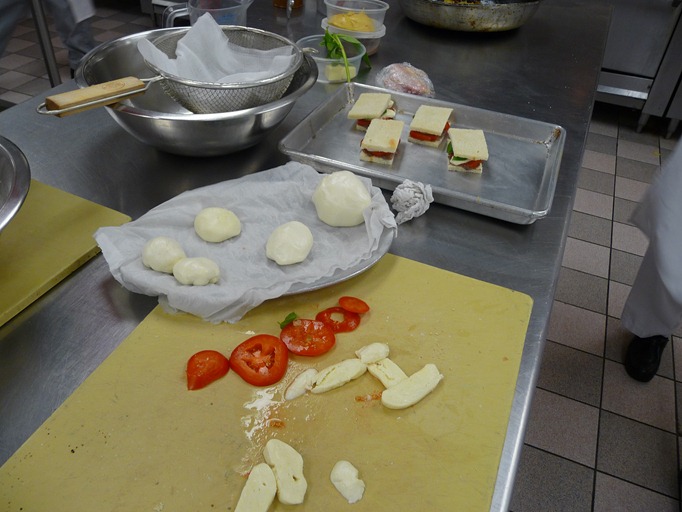
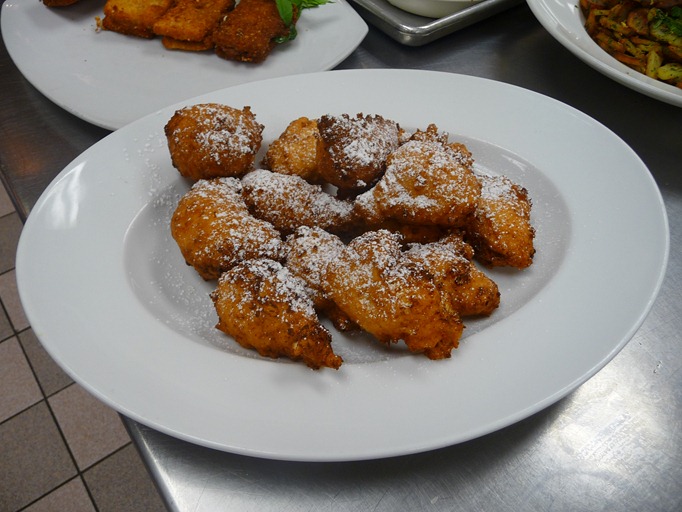
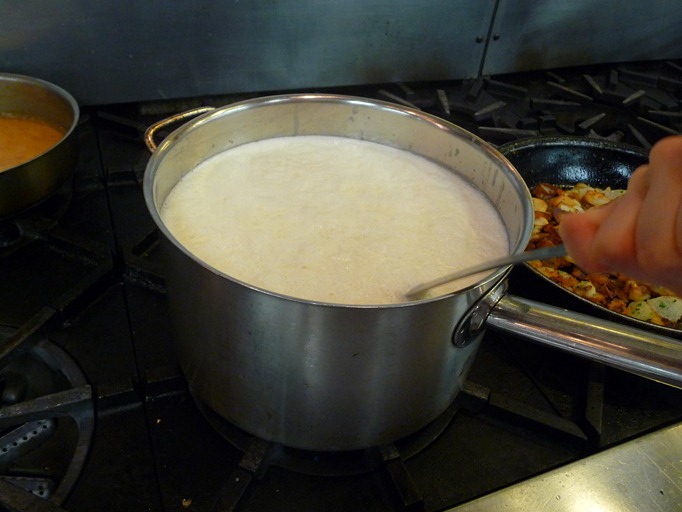
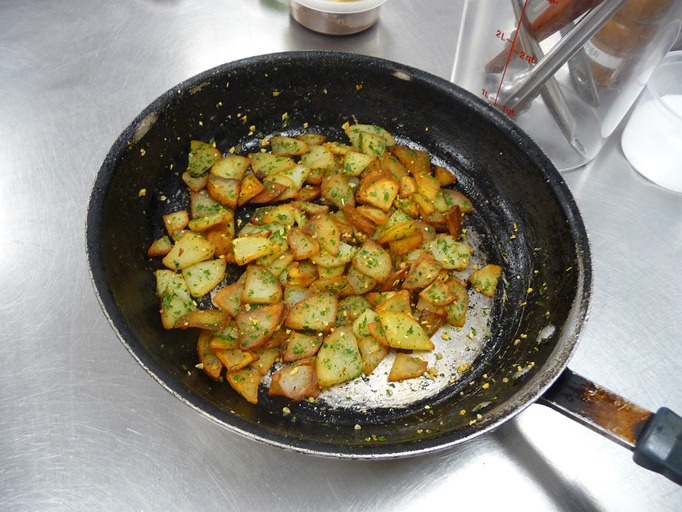
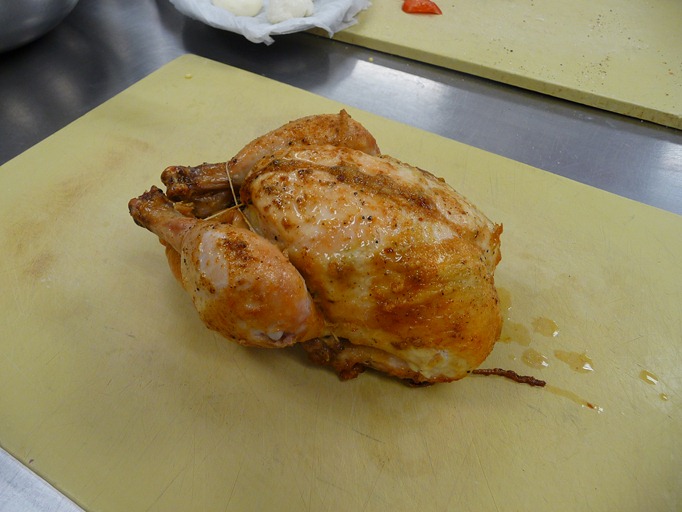
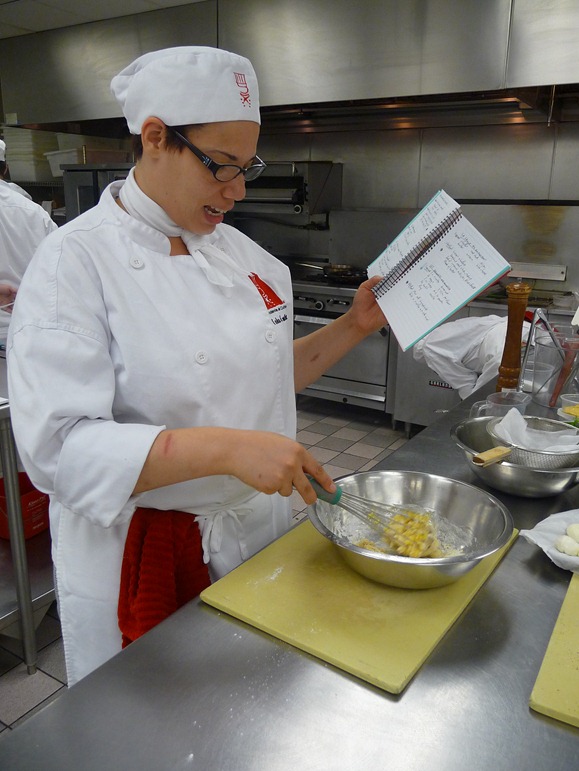
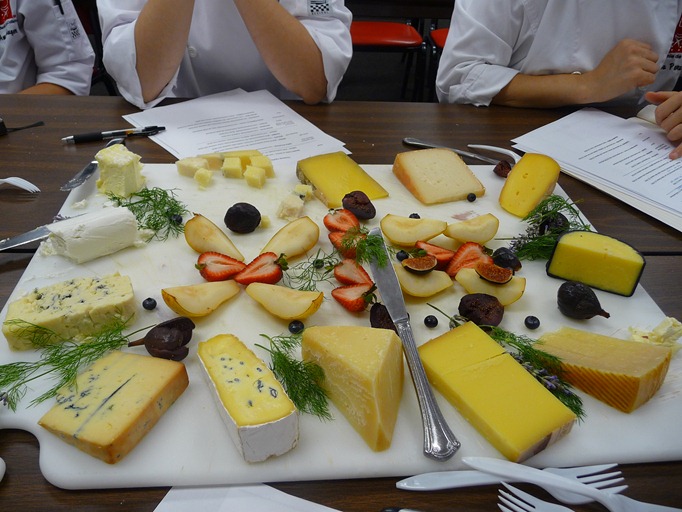
4 Comments on “Cheese-Making Class”
Liz — Thanks so much for visiting! Although most cheeses in the US are generally OK, always check! I clarified things below if you are more interested…
Jim — Thank you for commenting and stating your concern! I wanted to clarify what I wrote in my post–I am NOT advocating that pregnant women should eat raw milk products. However, it is true that any cheese younger than 60 days (most softer cheese, brie, goat cheese, etc–although it is important to check) HAS to be made with pasteurized milk in order for it to be sold in the United States.
The "60-day" law was enacted in 1949 based on FDA data at the time that no bacteria or other pathogens were found to survive in cheese aged PAST 60 days. That might change soon to a 100 or 120 day rule based on more recent data that the FDA released last summer, but you are absolutely right that pregnant women should make sure the dairy products they eat are pasteurized.
I hope this clarifies any confusion you might have had!
I'm sorry, but I think it is really dangerous for you to claim that raw milk warnings for pregnant women is a myth. The FDA very specifically warns against this, and while there are plenty of people who believe otherwise, pregnant women should make a very informed decision before they consume any raw milk products. Just because your teacher claims it is a myth does not make it so.
http://www.fda.gov/Food/ResourcesForYou/consumers/ucm079516.htm
Look at me with all those battle scars on my arms. Geez. I want ricotta beignets right now.
I have definitely heard that about pregnant women, so glad to hear it won't matter I LOVE cheese!